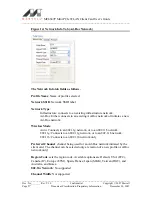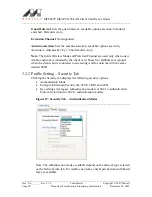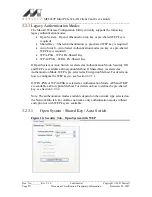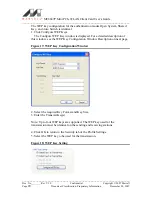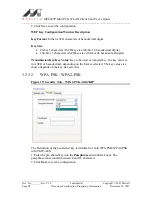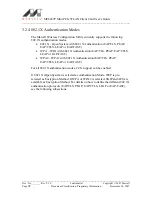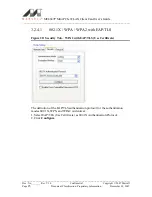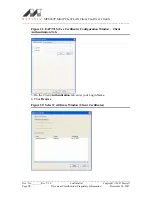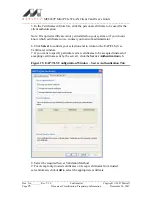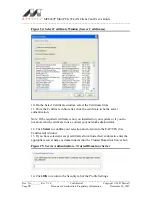
MC8687P Mini PCIe WLAN Client Card User’s Guide
________________________________________________________________________
________________________________________________________________________
Doc. No________ Rev.V1.0
Confidential
Copyright © 2007 Marvell
Page
11
Document Classification: Proprietary Information
December 28, 2007
The Link Information section contains the current information about the wireless
connection.
Figure 6: Link Information Section Description
Link Information Section Description
Status:
Status of the Wireless network connection:
•
Card Unplugged
: Client Card is not plugged in, or client card is plugged in
but not recognized.
•
Connected
: Client card is plugged in and connected to a wireless network.
•
No connection
: Client card is plugged in, but no wireless connection.
•
No Radio
: Client card is plugged in, but the radio is turned off. To turn the
radio on, clear the
Radio Off
check box.
•
Scanning for
: Scanning for available APs and wireless stations in the area.
•
Waiting for peer
: Waiting for a peer station to connect to the wireless
network (Ad-Hoc network only).
Network SSID
: Network SSID label (i.e., Network Name). The Network Name is
a text string of up to 32 characters.
Network type
: Type of environment connected to:
•
Infrastructure Mode
: In this mode, wireless clients send and receive
information through APs. The APs are strategically located within an area to
provide optimal coverage for wireless clients. A large WLAN uses multiple
APs provide coverage over a wide area. APs can connect to a LAN through
a wired Ethernet connection. APs send and receive information from the
LAN through the wired connection.
•
Ad-Hoc mode
: In this mode, wireless clients send and receive information
to other wireless client without using an AP. This type of WLAN only
contains wireless clients. Use Ad-Hoc mode to connect network computers
at home or in small office, or to set up a temporary wireless network for a
meeting.
Network BSSID
: Network Basic Service Set (BSS) Identifier. The BSSID is a
48-bit identifier used to identify a particular BSS within an area. In Infrastructure

















